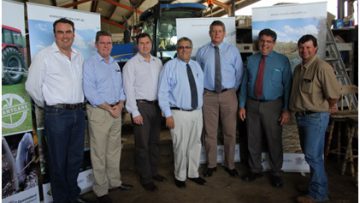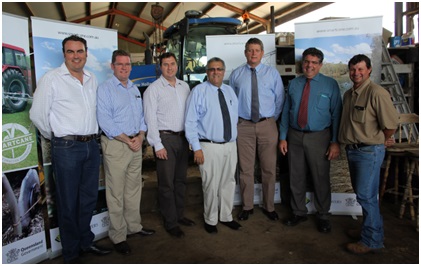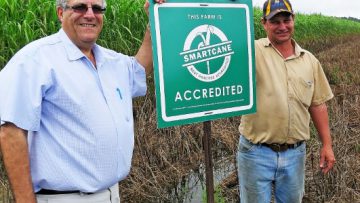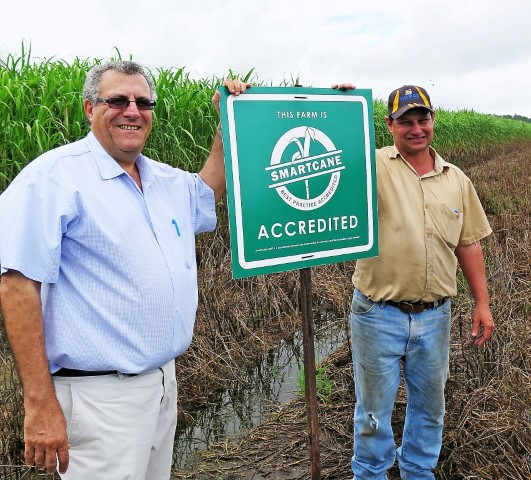Efficiency gains for improved productivity have come hand in hand with environmental sustainability for Innisfail farmers Morrie and Jeanette Spina. They’ve recently been accredited in the three core modules of Smartcane BMP, the industry’s best management practice program.
Morrie and Jeanette have 150 hectares of cane across three farms including one tucked behind houses within stone’s throw of the Innisfail central business district. In the 2015 season they cut 12,800 tonnes of cane for an average CCS of 12 across the three farms.
Jeanette says the Smartcane BMP accreditation process made them look at their farming operation differently and identify efficiencies. With a plant nursery business to run as well, there’s not a lot spare time to be had in Morrie and Jeanette’s working schedule.
Jeanette says the Smartcane BMP accreditation process made them look at their farming operation differently and identify efficiencies. With a plant nursery business to run as well, there’s not a lot spare time to be had in Morrie and Jeanette’s working schedule.
“We looked at everything,” Jeanette says. “Fuel and time especially – how many times Morrie would pass up and down a row was a big thing to try to cut down.”
“We were trying to be as efficient as we could as farmers because we’re not getting big money for our cane and I was probably already doing half of the record-keeping we needed for accreditation,” Morrie says.
“We were trying to be as efficient as we could as farmers because we’re not getting big money for our cane and I was probably already doing half of the record-keeping we needed for accreditation,” Morrie says.
In many cases they’ve found changes which have given them cost or time efficiencies have also had environmental gains. For example, fewer passes through the paddocks of Q200, Q250, Q251 and Q247 mean less soil disturbance affecting soil and crop health.
Guinea grass is a constant problem but moving from broad-scale spraying to spot spraying means less chemical is being used for a better result.
Guinea grass is a constant problem but moving from broad-scale spraying to spot spraying means less chemical is being used for a better result.
“We do the spot-spraying with a quad bike which uses a lot less fuel than the tractor and just a little bit of poison rather than spraying a lot out up high,” Jeanette says.
“We no longer wait for the guinea grass to get high,” Morrie adds. “I can jump on the quad bike when it’s small and it takes less time.”
“We no longer wait for the guinea grass to get high,” Morrie adds. “I can jump on the quad bike when it’s small and it takes less time.”
With two of the farms on the banks of Bamboo Creek and the North Johnstone River they are very aware of the off-farm impacts of their farming practices. Subsurface application of fertilisers ensures that expensive input stays where it needs to – in the crop.
“Morrie re-built our fertiliser box to make it bigger and higher to hold more fertiliser so he doesn’t have to come back to the shed as often which saves fuel,” Jeanette says.
“Morrie re-built our fertiliser box to make it bigger and higher to hold more fertiliser so he doesn’t have to come back to the shed as often which saves fuel,” Jeanette says.
Smartcane BMP accreditation has been the latest step in their drive for production efficiency and environmental best practice which has already seen them work with Terrain NRM and the Australian Government Reef Programme (formerly Reef Rescue) to install GPS equipment for controlled traffic farming, acquire a bed renovator and high rise sprayer. “We did Smartcane BMP to be as cost efficient per unit of production as we can while at the same time looking after the environment,” Morrie said. “In our area, farmers are the best conservationists there are because of what we get for our cane, we can’t afford to be wasting time or money.”




